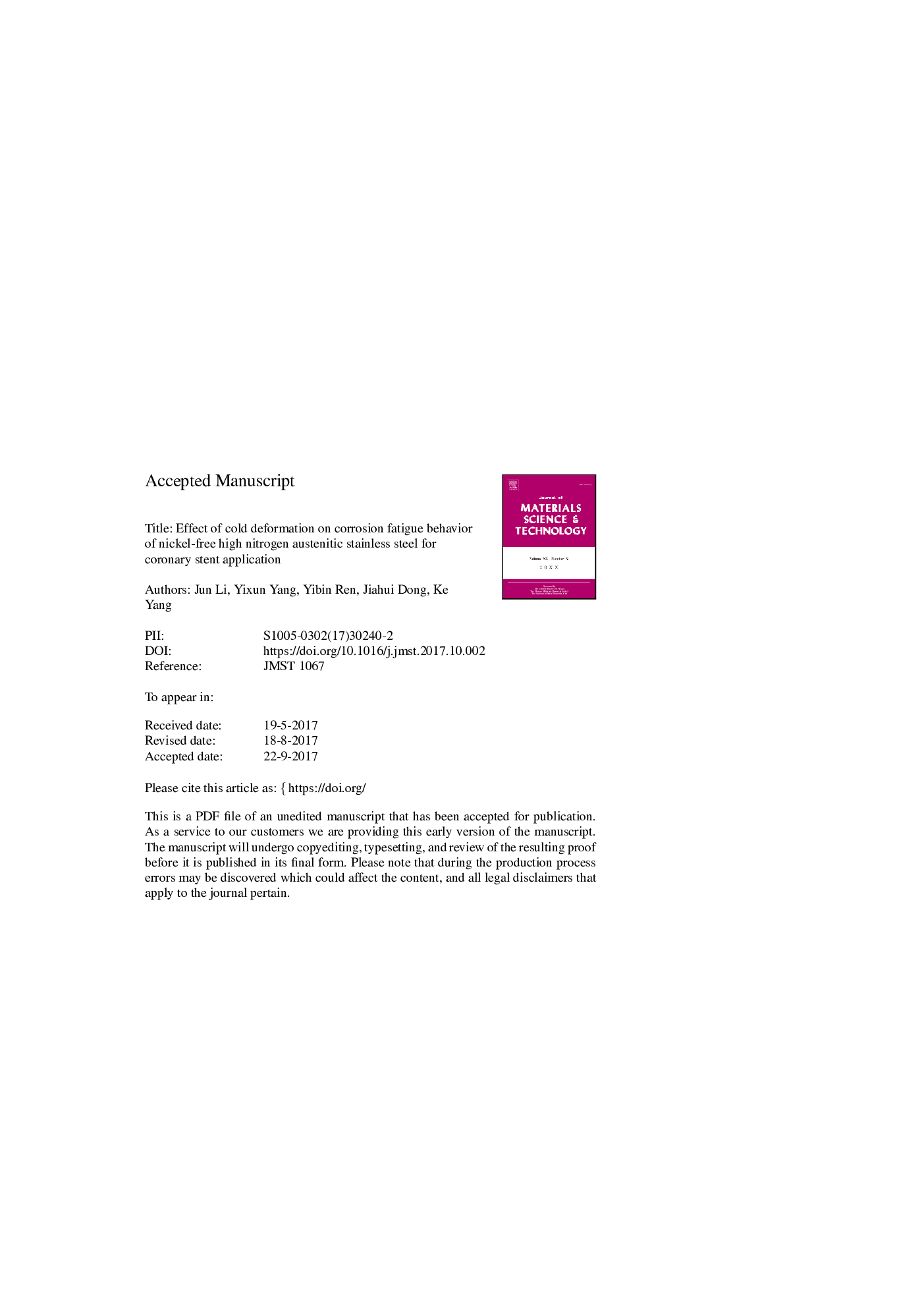| Article ID | Journal | Published Year | Pages | File Type |
|---|---|---|---|---|
| 7952016 | Journal of Materials Science & Technology | 2018 | 19 Pages |
Abstract
Due to the excellent mechanical properties, good corrosion resistance, high biocompatibility and nickel-free character, the high nitrogen nickel-free austenitic stainless steel (HNASS) becomes an ideally alternative material for coronary stents. Stent implantation works in harsh blood environment after a balloon dilatation, i.e., the material is used in a corrosive environment with a permanent deformation. The present study attempts to investigate effects of pre-straining on high-cycle fatigue behavior and corrosion fatigue behavior of HNASS in Hank's solution and the relevant mechanism for coronary stents application. It is found that higher pre-straining on HNASS results in higher strength and maintains almost same corrosion resistance. Fatigue limit of 0% HNASS is 550Â MPa, while corrosion fatigue limit is 475Â MPa. And improvement in fatigue limit of 20% and 35% pre-strained HNASS is in comparison with the 0% HNASS, while corrosion would undermine the fatigue behavior of HNASS. In a suitable range, the pre-straining had a beneficial effect on corrosion fatigue strength of HNASS, such as nearly 300Â MPa improved with 20% cold deformation. This result provides a good reference for predicting the life of HNASS stent and as well its design.
Keywords
Related Topics
Physical Sciences and Engineering
Materials Science
Materials Chemistry
Authors
Jun Li, Yixun Yang, Yibin Ren, Jiahui Dong, Ke Yang,
